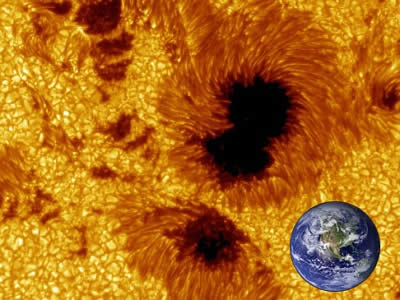- MONITORING AND MODELING SPACE WEATHER
- Instruments & Techniques
- Monitoring Space Weather
- Ground-based
- Modeling
- Metrics & Indices
Monitoring and Modeling Space Weather
How do we know what kind of "weather" we're having in space? Scientists use a network of ground-based observatories combined with satellite-based instruments to monitor solar activity, measure magnetic fields, and detect many types of radiation. They also use complex computer models to help predict the ebb and flow of space weather systems.
Please log in
Science Blogs
Real Climate: climate science from climate scientists

Windows to the Universe, a project of the National Earth Science Teachers Association, is sponsored in part is sponsored in part through grants from federal agencies (NASA and NOAA), and partnerships with affiliated organizations, including the American Geophysical Union, the Howard Hughes Medical Institute, the Earth System Information Partnership, the American Meteorological Society, the National Center for Science Education, and TERC. The American Geophysical Union and the American Geosciences Institute are Windows to the Universe Founding Partners. NESTA welcomes new Institutional Affiliates in support of our ongoing programs, as well as collaborations on new projects. Contact NESTA for more information.






